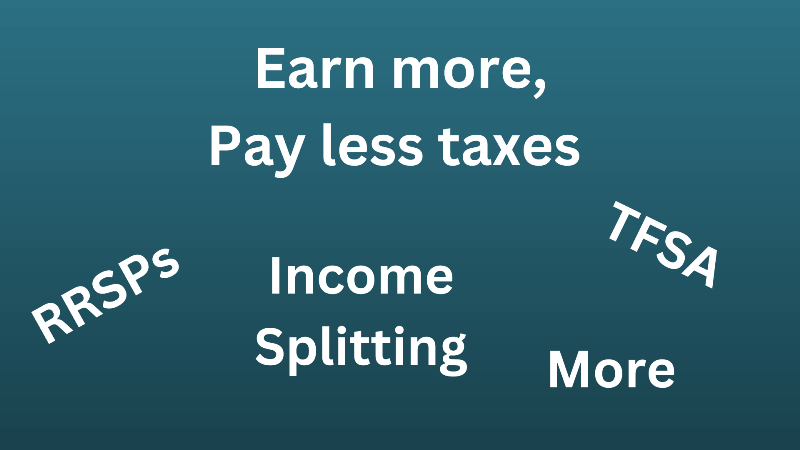In many posts, I have spoken about the advantages of investing in RRSP, TFSA, and non-registered accounts.
Here is a refresher of the investment ideas we have mentioned before:
Invest money on your RRSP
The contribution limit for your RRSP is 18% of your earned income in the previous year. For the year 2023 there was a cap of up to $30,780.
The RRSP is a great retirement savings tool because contributions can be deducted from your income. The biggest savings come to those with big incomes who would normally be taxed at a high marginal rate. As an example; if your top rate is forty per cent, your refund will be about forty per cent of your contribution.
Reinvesting your refund in your RRSP will not only add to the total amount compounding in investments over time, but will also generate further refunds. Using the example already mentioned, each refund would be forty per cent of the previous reinvestment.
you can take money out of your RRSP any time. However, any amount you withdraw will be included as income for tax purposes. You’ll also pay withholding tax on the amount you withdraw
Contribute in your TFSA
Unfortunately, one day, when you start withdrawing money from your RRSP, that money will be taxable.
You could be the victim of your own success – and even have some of your Old Age Security (OAS) benefits clawed back – if your annual RRSP withdrawals are taxed at a higher rate than the original contribution.
That’s when you need to look into your crystal ball and determine how much of your savings and RRSP refunds should be channeled into your tax-free savings account.
Unlike RRSP contributions, TFSA contributions can not be deducted from income but they – along with any investment returns they generate – are not taxed when they are withdrawn. The only exception are dividends from U.S. equities.
You can adjust the balance between your RRSP and TFSA according to each year’s income and over time as your retirement goals become clearer, but the ideal tax situation would be to draw income from your RRSP at a low marginal rate and top up any additional income from your TFSA.
The only drawback of the TFSA is its low contribution limit. The annual TFSA dollar limit for the year 2023 is $6,500. The annual TFSA dollar limit for the years 2019 to 2022 was $6,000. The annual TFSA dollar limit for the years 2016 to 2018 was $5,500.
However, when your money is growing tax free, it can grow a lot faster.
Capital gains are taxes at a lower percentage rate
There are ways to incorporate investments in non-registered accounts into your tax strategy.
The biggest tax advantage outside of a TFSA or RRSP is the 50 per cent capital gains exemption, which only taxes half of the gains on stocks or other equity investments when they are sold.
While a 50 per cent capital gains exemption is not as good as a 100 per cent exemption in a TFSA, investors in non-registered accounts can also benefit from market losses. Tax-loss selling permits the use of equity losses to recoup capital gains taxes already paid in the past three years or apply them against future capital gains.
Dividend tax credits are also granted on eligible equities in non-registered trading accounts.
Split your income with your spouse to reduce your taxes
Investors can also keep more of their tax dollars invested by splitting income with a lower-income spouse, who is taxed at a lower marginal rate.
Higher-income spouses can split up to half of their income with a lower-income spouse once they turn 65, but there are ways to transfer the tax burden beforehand through a spousal RRSP. The higher-income spouse can deduct contributions from their income (at a high marginal rate), and withdrawals are taxed in the hands of the lower-income spouse (at a low marginal rate).
